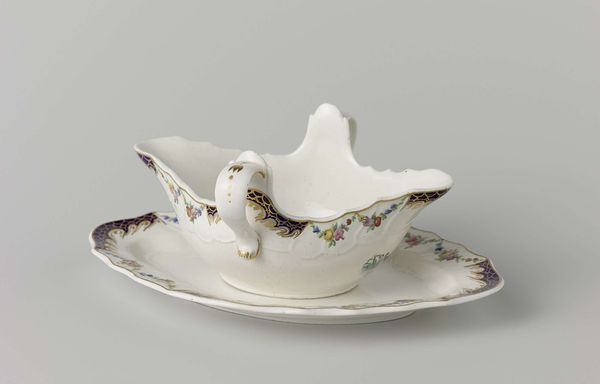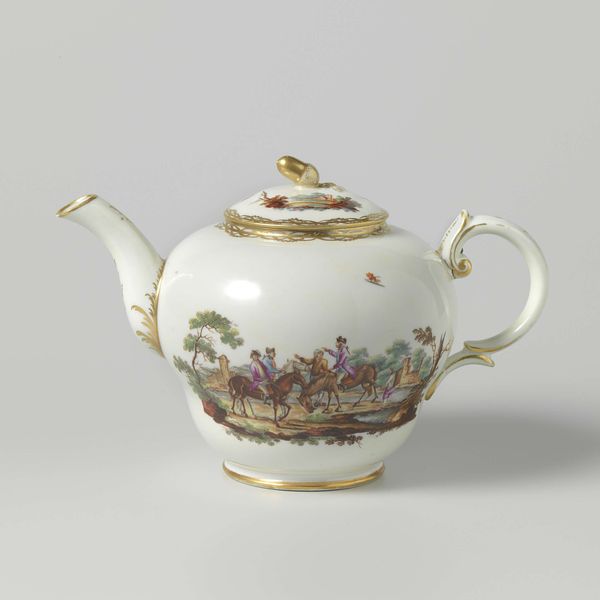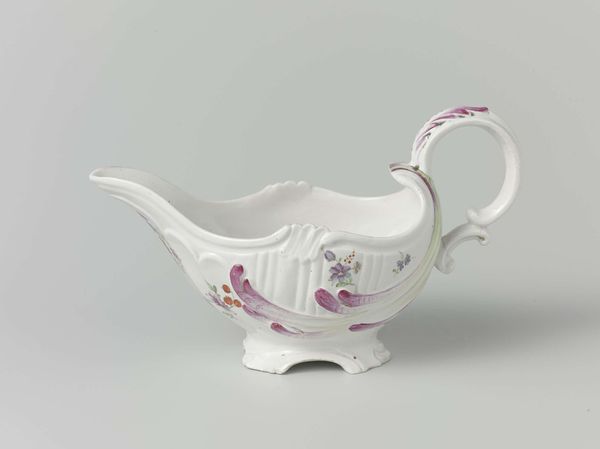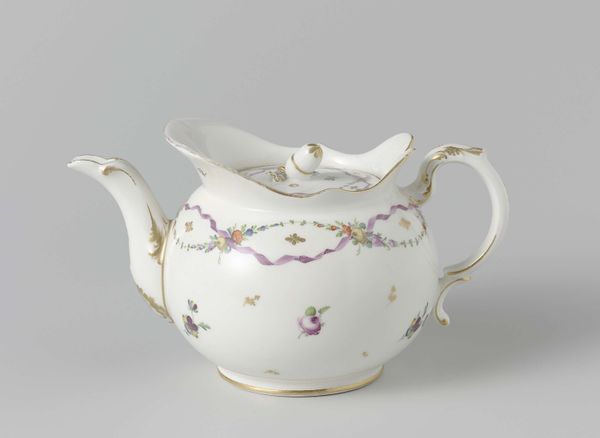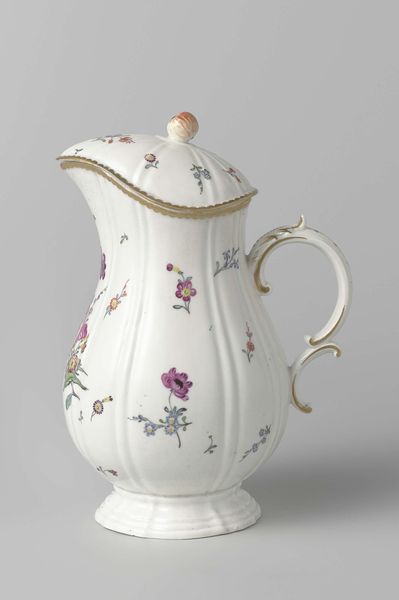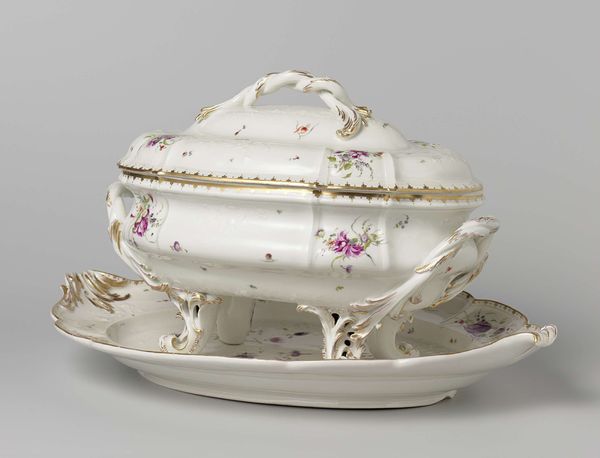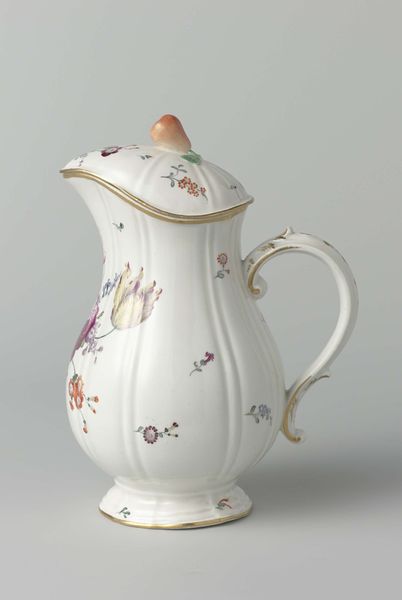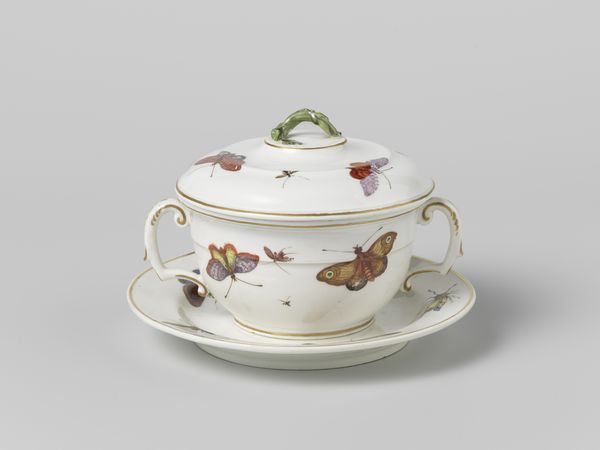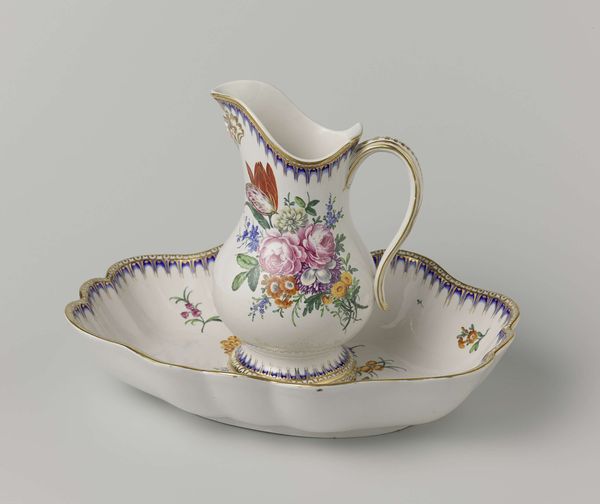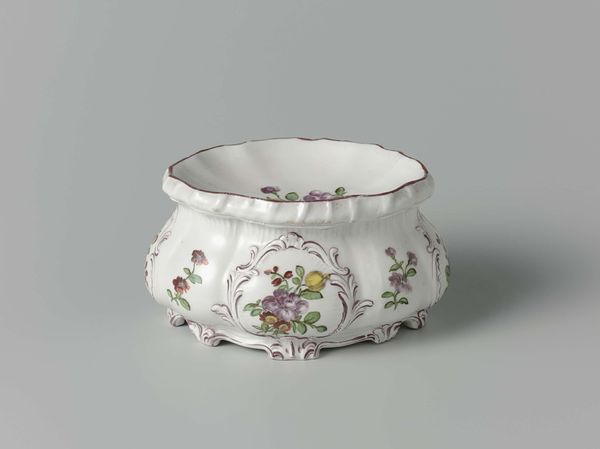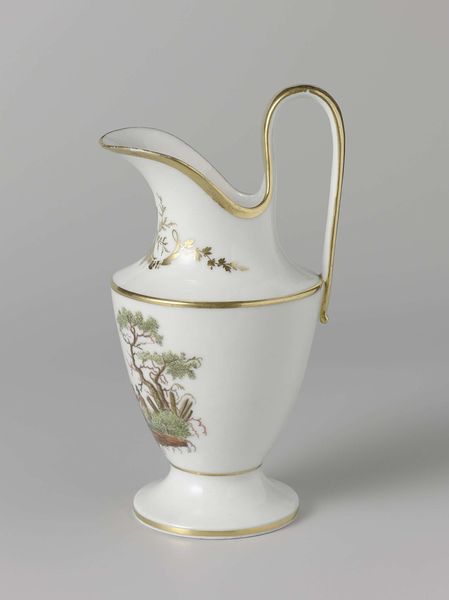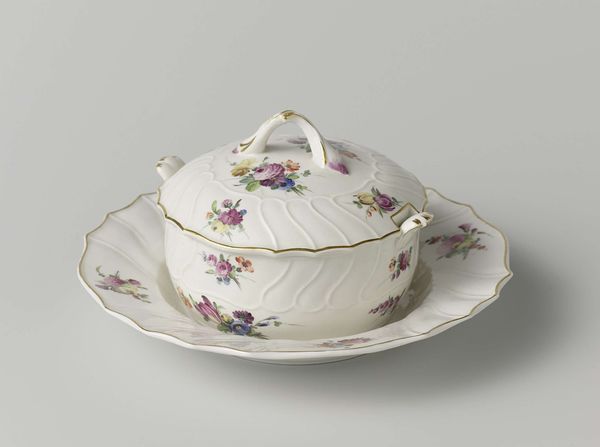
ceramic, earthenware
#
art-nouveau
#
ceramic
#
earthenware
#
stoneware
#
ceramic
Dimensions: height 8.7 cm, width 19.8 cm, depth 13.6 cm
Copyright: Rijks Museum: Open Domain
Editor: Here we have a painted earthenware piece from 1900 titled "Blaker beschilderd met papegaai," made at the Rozenburg factory. The curves and colors give it such a whimsical, fantastical feel. What do you see in this piece? Curator: I see a deliberate engagement with the symbolism inherent in Art Nouveau and its relationship to societal anxieties around the turn of the century. Look at the parrot. Why a parrot, specifically? In the context of increasing globalization, parrots, often taken from their natural habitats, become stand-ins for exploited resources and the exoticized Other, packaged for Western consumption. Editor: That's a fascinating way to look at it. I was mainly focusing on the visual design. Curator: Exactly! And how does the design reinforce this? The sinuous lines, the delicate rendering of the parrot – is it celebrating nature, or domesticating and confining it within the bounds of bourgeois aesthetics? Rozenburg, like other Art Nouveau potteries, marketed luxury goods. Who had access to such commodities, and what colonial narratives did they reinforce through their ownership? Editor: So, you're saying it's not just a pretty object, but a reflection of the social inequalities of the time? Curator: Precisely! Think about it. The "natural" world depicted here is carefully curated and commodified, echoing broader societal structures. By recognizing the embedded politics of such designs, we can question how these historical patterns persist even today. Editor: Wow, I never would have thought about it that deeply. I’ll never look at Art Nouveau the same way. Curator: Art isn’t created in a vacuum; its always a part of something bigger, politically and culturally.
Comments
No comments
Be the first to comment and join the conversation on the ultimate creative platform.
